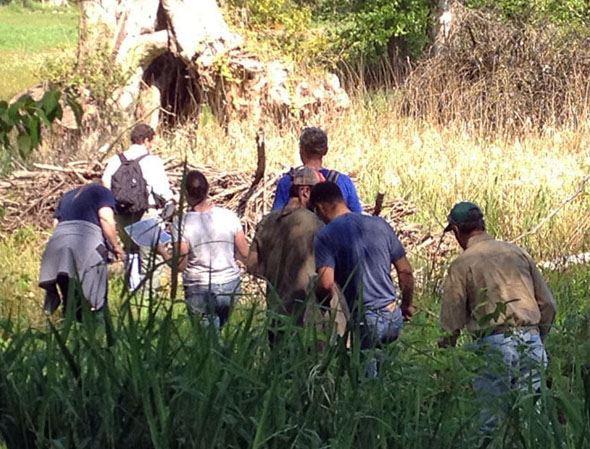
This 2-day training provides information and methods for determining the ordinary high water mark (OHWM) as defined in the state Shoreline Management Act (SMA). Waters regulated under the SMA include all tidal waters, streams greater than 20 cubic feet per second mean annual flow, water bodies greater than 20 acres in size and any associated wetlands and deltas. Field visits to each of the SMA water types will give you the opportunity to apply the methods discussed in the classroom.
In this training, you will learn answers to these questions:
- How is the OHWM defined and where does it apply?
- What is the regulatory context and history of the OHWM?
- Why it is important to use field indicators to determine the OHWM?
- What are the most reliable field indicators on tidal waters, streams, lakes and associated wetlands?
- What are some common misconceptions about OHWM determinations?
(12 AICP CM Credits / CEP Points)
Lunch is provided.
Instructors: Diane Hennessey has specialized in the ecology, protection, and restoration of aquatic systems for 17 years. She has worked as an aquatic resource scientist in private consulting and currently works as a Wetland Specialist for Washington State Department of Ecology. Her work has included stream, wetland, and wildlife habitat studies including delineation of both wetland and stream ordinary high water mark boundaries; preparing, reviewing, and issuing environmental permits; planning, design, and preparing aquatic restoration plans; monitoring mitigation and restoration projects; providing technical assistance in aquatic resource protection and conservation to local governments; and compliance monitoring of permits and violations. She has also been an instructor for the University of Washington-Seattle Wetland Science and Management Certificate Program since 2005 and has taught Wetlands Science and Ecological Processes; and Wetlands Identification and Delineation.
Rick Mraz is a certified Professional Wetland Scientist who works as a Shorelands Technical and Regulatory Lead. He began his career in wetlands work in Lee County, Florida in 1987. He has worked as a field biologist and environmental planner with local, state and federal agencies in Washington since 2001. Rick has degrees in Geology, Field Biology and Philosophy.
Lynn Schmidt is the Department of Ecology’s Statewide Flood Engineer, focusing on reducing flood risks to communities while enhancing natural floodplain functions. Her career has spanned a wide range of topics within the environmental and hydraulics engineering fields, including hydraulic modeling, river restoration, floodplain management, stormwater management, environmental investigations, and monitoring. Lynn holds a BS in Civil Engineering, MS in Environmental Engineering, and is a Professional Engineer and Certified Floodplain Manager.
